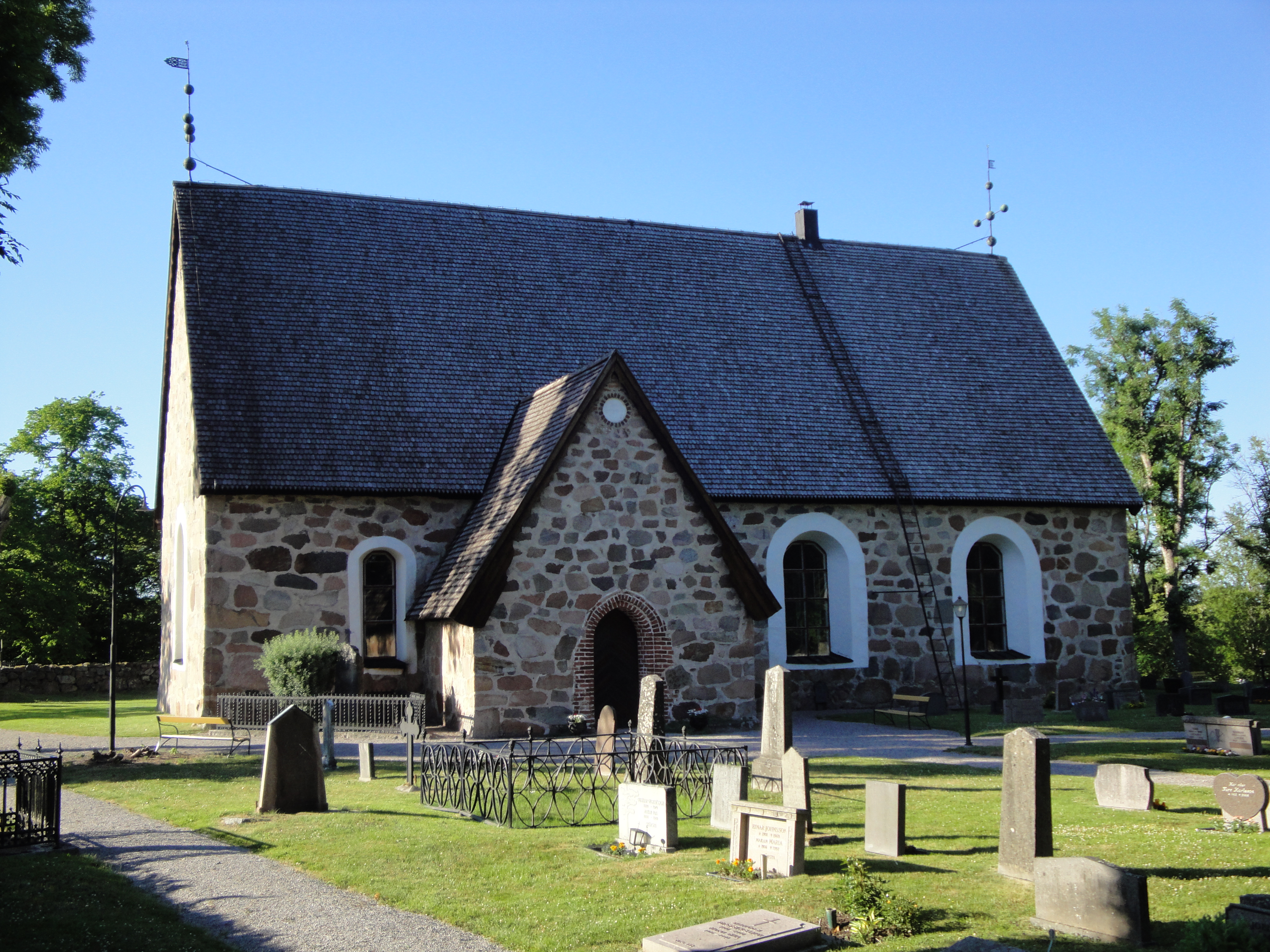Edebo Church on:
[Wikipedia]
[Google]
[Amazon]
 Edebo Church ( sv, Edebo kyrka) is a medieval
Edebo Church ( sv, Edebo kyrka) is a medieval
Lutheran
Lutheranism is one of the largest branches of Protestantism, identifying primarily with the theology of Martin Luther, the 16th-century German monk and reformer whose efforts to reform the theology and practice of the Catholic Church launched th ...
church in Norrtälje Municipality, Stockholm County
Stockholm County ( sv, Stockholms län, link=no ) is a county or '' län'' (in Swedish) on the Baltic Sea coast of Sweden. It borders Uppsala County and Södermanland County. It also borders Mälaren and the Baltic Sea. The city of Stockholm ...
, Sweden
Sweden, formally the Kingdom of Sweden,The United Nations Group of Experts on Geographical Names states that the country's formal name is the Kingdom of SwedenUNGEGN World Geographical Names, Sweden./ref> is a Nordic country located on ...
. It belongs to the Archdiocese of Uppsala
The Archdiocese of Uppsala ( sv, Uppsala ärkestift) is one of the thirteen dioceses of the Church of Sweden and the only one having the status of an archdiocese.
Lutheran archdiocese
Uppsala is the seat of the Lutheran Archbishop of Uppsala. Th ...
.
History and architecture
Edebo is mentioned in written sources for the first time in 1291. The first church at the site was probably wooden and may have been erected sometime 1250-1350. The wooden church was replaced with the currently visible stone church during the late 15th century. The church porch was probably added at the beginning of the 16th century. During this time the church was also decorated internally withfrescos
Fresco (plural ''frescos'' or ''frescoes'') is a technique of mural painting executed upon freshly laid ("wet") lime plaster. Water is used as the vehicle for the dry-powder pigment to merge with the plaster, and with the setting of the plaste ...
. The sacristy
A sacristy, also known as a vestry or preparation room, is a room in Christian churches for the keeping of vestments (such as the alb and chasuble) and other church furnishings, sacred vessels, and parish records.
The sacristy is usually located ...
was built 1748, and the wooden bell tower possibly in 1758. These were partially covered with whitewash during the 18th century, when the windows were enlarged and the church received new furnishings in Baroque
The Baroque (, ; ) is a style of architecture, music, dance, painting, sculpture, poetry, and other arts that flourished in Europe from the early 17th century until the 1750s. In the territories of the Spanish and Portuguese empires including t ...
style. The church was renovated ion 1911-13 by architect Sigurd Curman
Sigurd ( non, Sigurðr ) or Siegfried (Middle High German: ''Sîvrit'') is a legendary hero of Germanic heroic legend, who killed a dragon and was later murdered. It is possible he was inspired by one or more figures from the Frankish Meroving ...
; during the renovation the frescos were also restored.
The building material of the church is fieldstone
Fieldstone is a naturally occurring type of stone, which lies at or near the surface of the Earth. Fieldstone is a nuisance for farmers seeking to expand their land under cultivation, but at some point it began to be used as a construction mate ...
, with brick
A brick is a type of block used to build walls, pavements and other elements in masonry construction. Properly, the term ''brick'' denotes a block composed of dried clay, but is now also used informally to denote other chemically cured cons ...
used for the finer details.
References
External links
* {{Authority control Buildings and structures in Stockholm County Churches in the Diocese of Uppsala Churches converted from the Roman Catholic Church to the Church of Sweden